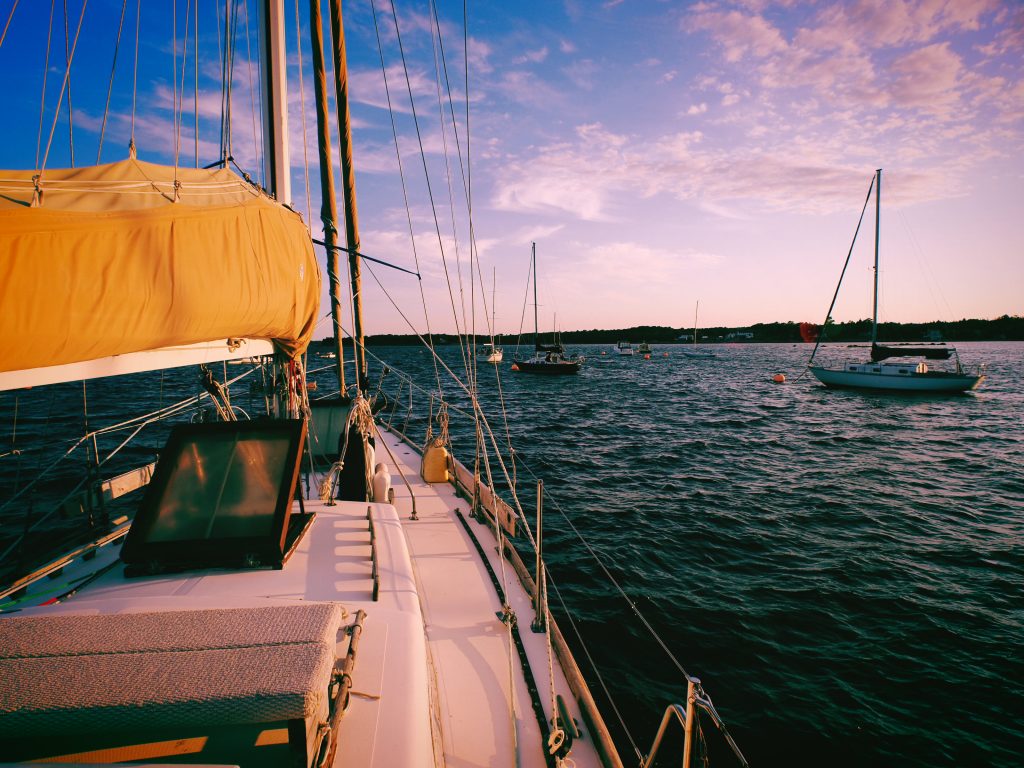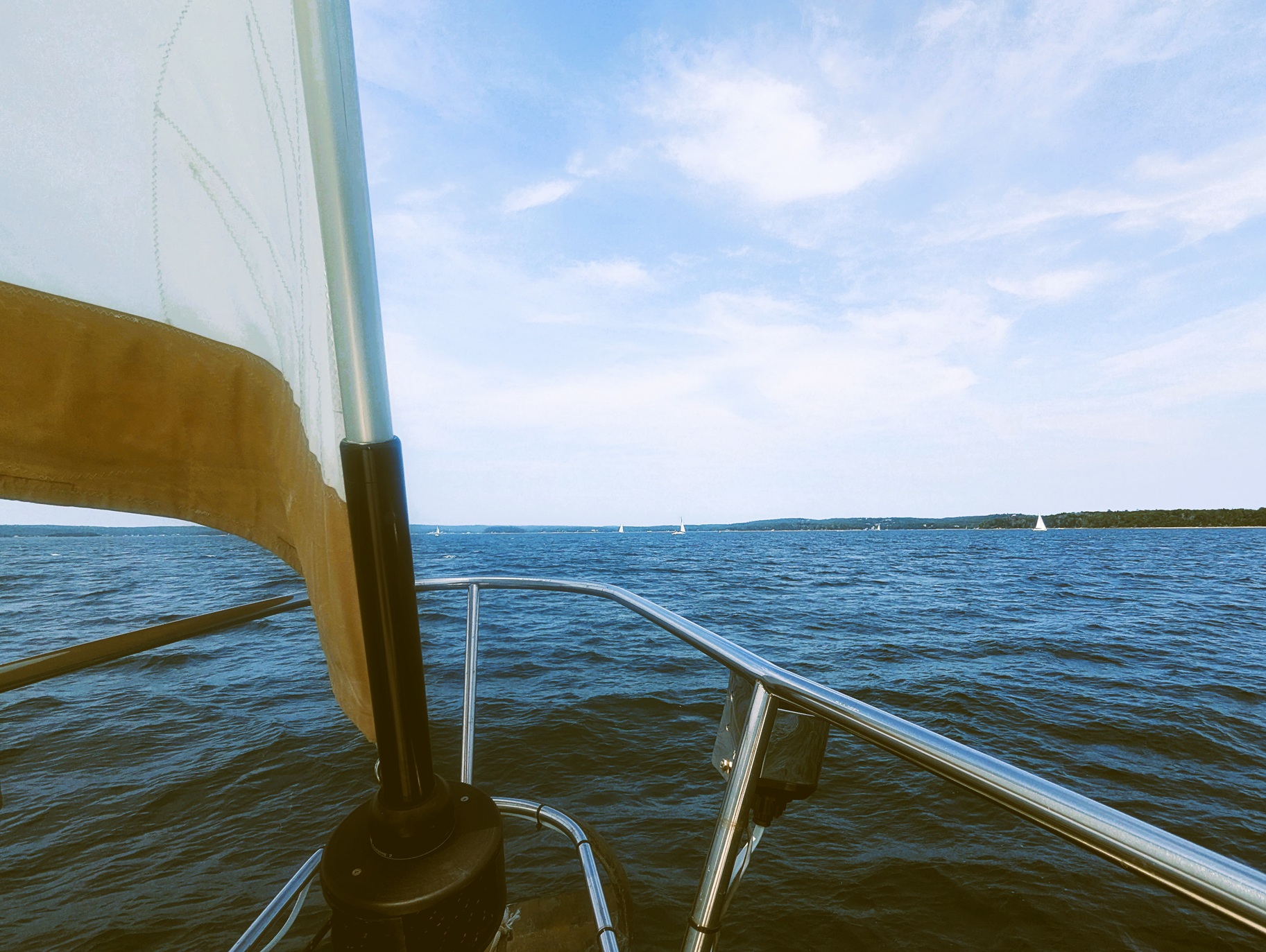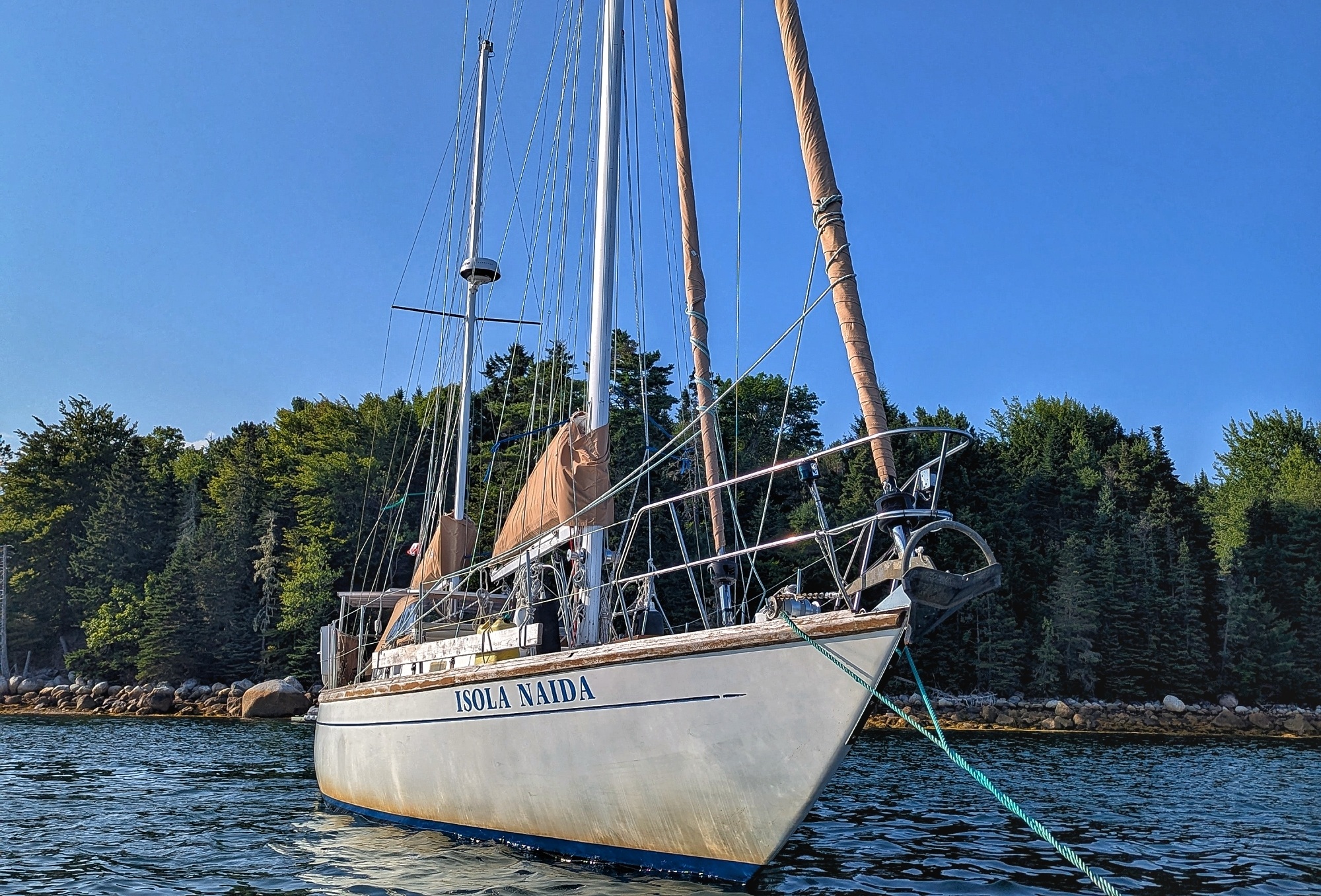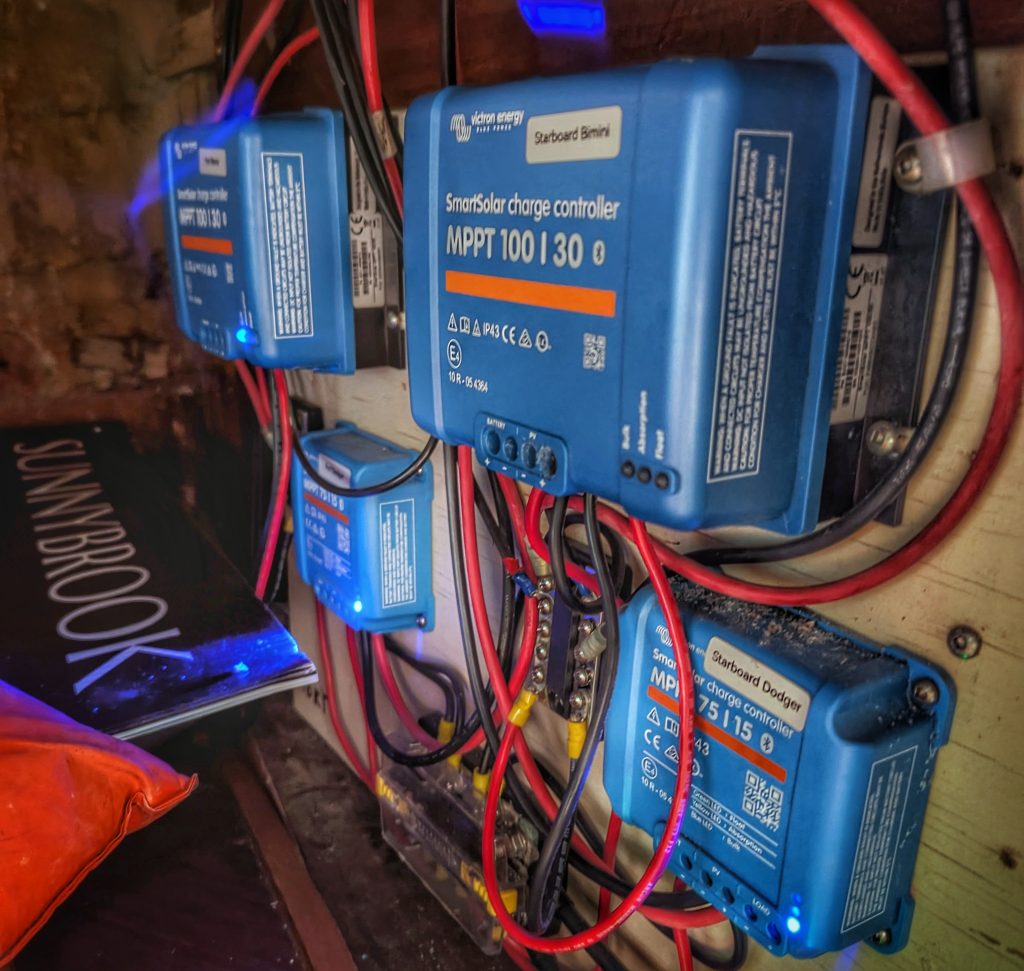This past week the MC4 connectors for the solar panels arrived, D’Arcy taught sailing to new Canadians, and we took Isola Naida out for a day sail around Mahone Bay!
Solar Panel Back Online
The MC4 connectors for the solar panels arrived from Amazon on Thursday. On Friday evening, D’Arcy was onboard repairing the connection to the starboard bimini solar panel. It took some coaxing to get enough slack on the wire to make the repair – there was plenty of wire in the aft compartment, but with so many zip-ties securing bundles through the cockpit lockers and about the pushpit rails, freeing enough to work with it took some effort.
Disconnecting the old connectors showed just how corroded the wires had become. A full re-wire will likely be necessary in the future. After stripping the wires back and inch, crimping on the MC4 inner connector and enclosing it in the outer housing was straightforward in theory, but finicky in practice – especially when working over the stern of the boat.
Once everything was reassembled, seeing the MPPT change from “Off” to “Float” was a huge relief. We had connectivity again! By then, the sun was too low for the system to register wattage, so we’d have to wait until Sunday to see how the panel performed.
Broader Reach
The Armdale Yacht Club Sailing School offers a program called Broader Reach in partnership with the YMCA Halifax & Dartmouth and the Centre for Immigrant Programs. It’s designed to introduce recent immigrants to Canada to the sport of sailing and the community that surrounds it. Many graduates stick around and crew in Wednesday and Thursday evening races.
This weekend, the head of the sailing school reached out to the club’s race-crewing chat seeking an extra instructor. D’Arcy volunteered.
The day started at 10:00 with a quick classroom session on tacking, followed by rigging Solings. Three students joined an instructor in each boat, while the rest rotated through a RHIB on the water.
For a few hours, we ran laps in front of the club, giving students a chance to practice tacking, pointing, and getting a feel for how the Soling handles. At 13:00, we returned for lunch, followed by another classroom session covering points of sail, gybing, and reading the wind. Some students asked advanced questions, so we took a detour into sailing physics — how sail shape affects speed, how the jib and main work together, and how the keel factors in.
Back on the water, we practiced gybing. Toward the end, the students with the advanced questions joined my boat. They were handling the Soling well, so I showed them how to trim sails for more speed. Soon, we caught a good breeze across the mooring field and had the Soling heeling over, giving them their first taste of hiking out over the side.
By 15:30, we were back at the dock, de-rigging for the day. The students asked if I’d be back next weekend — sadly, I wouldn’t — but I suspect I may have encouraged a few future Wednesday night race crew members.
Day Sail
On Sunday, we finally made it out for a long-awaited day sail aboard Isola Naida. Having missed the chance last weekend, this time we came aboard with one mission: sail.
We departed the marina with the winds blowing out of the south – perfect for hoisting sails without needing to alter course. The main went up slowly but smoothly. Once set, we shut off the engine and watched as we recorded 1.6 kts in 6 kts of wind. With the jib unfurled and mizzen hoisted, we passed 4 kts as the breeze picked up to the 8 kts. A pod of harbour porpoises joined us briefly, clearly enjoying a rich hunting ground.
As we approached Frog Island, our speed climbed over 5 kts. We decided to drop the main and try a jib-and-jigger setup. as we rounded the island the winds strengthened and with this configuration we comfortably sailed at 6.5 kts in 13 – 16kts of wind. We sailed across Mahone Bay for a while before tacking around to make our way back toward the marina.
The downwind leg toward the marina was leisurely. Noelle read in the cockpit while D’Arcy monitored the autohelm and passing traffic. As we approached the marina, we dropped the mizzen, furled the jib, and started the engine.
Our mooring is on the northern edge of the mooring field, close to the shore. In a southerly wind, making the approach to the mooring ball can be tricky – the shallow water and nearby moored boats leave little room to manoeuvre. Instead of threading between them and the shoreline, we looped through the mooring field, made a sharp turn to starboard onto the ball, and gave a quick burst in reverse to avoid overshooting the bridles. This route worked out well and we came to a stop with the bow of the boat nearly directly over the mooring ball.
This Is Why We Do This
This weekend was one that reminded us why we love sailing – a satisfying boat repair, the joy of introducing new sailors to the sport, and a day on the water that gave us both speed and serenity. Isola Naida sailed beautifully, the solar panel is charging again, and we met some great people along the way.
We’ve shared a few video highlights from the sail, but there’s always more happening behind the scenes. If you enjoyed this little window into our weekend, follow along on Instagram, YouTube, or Facebook for more sailing adventures, boat projects, and life afloat. Fair winds until next time!




